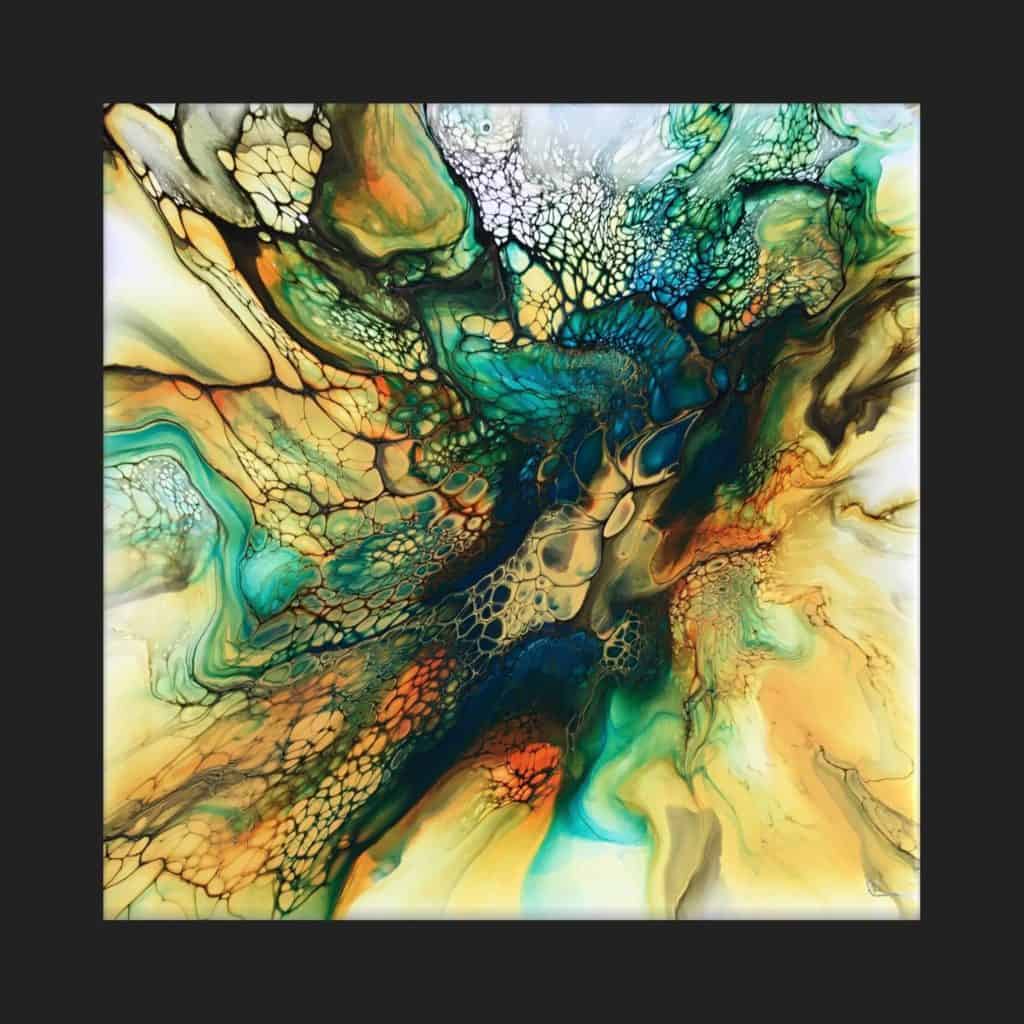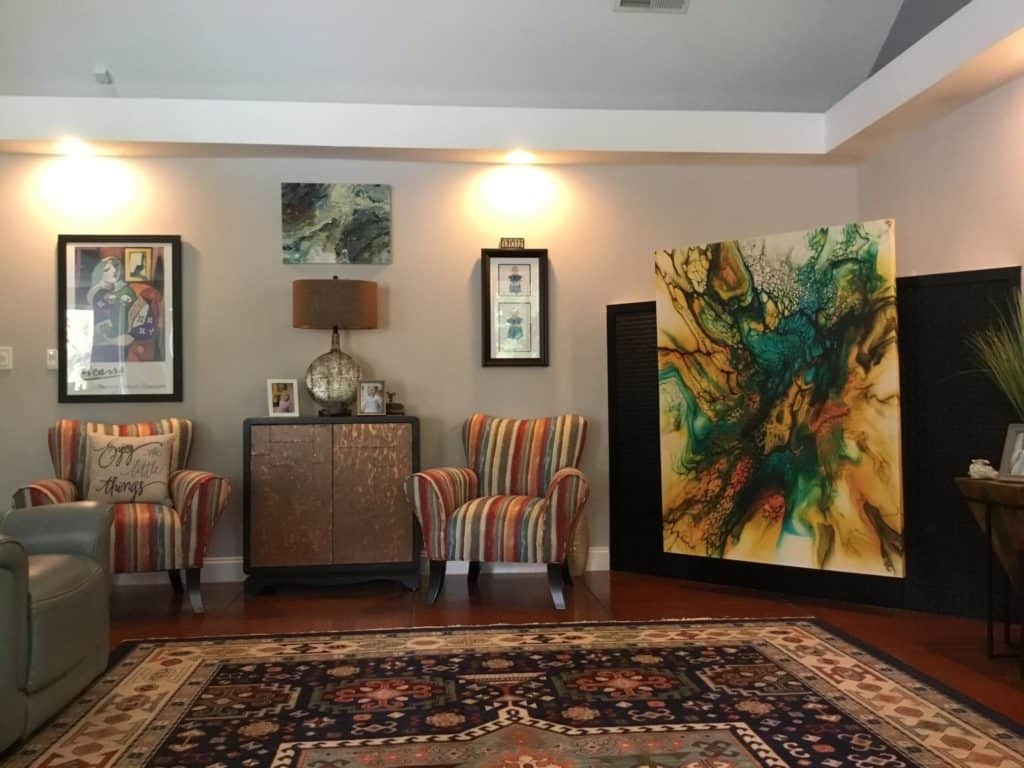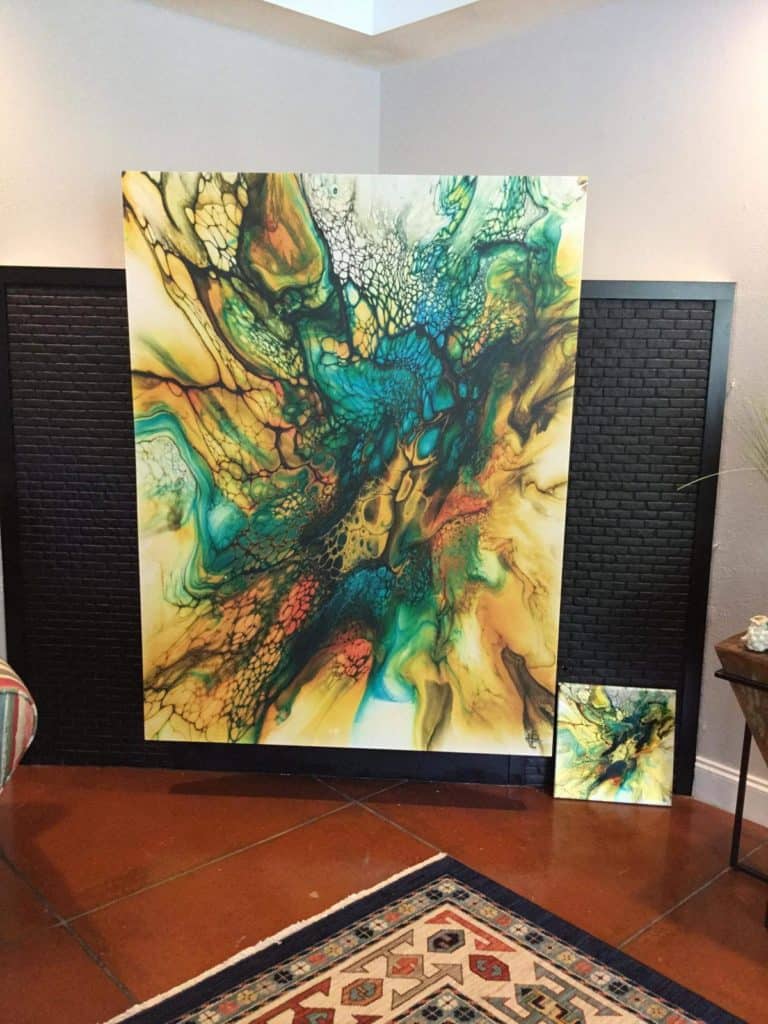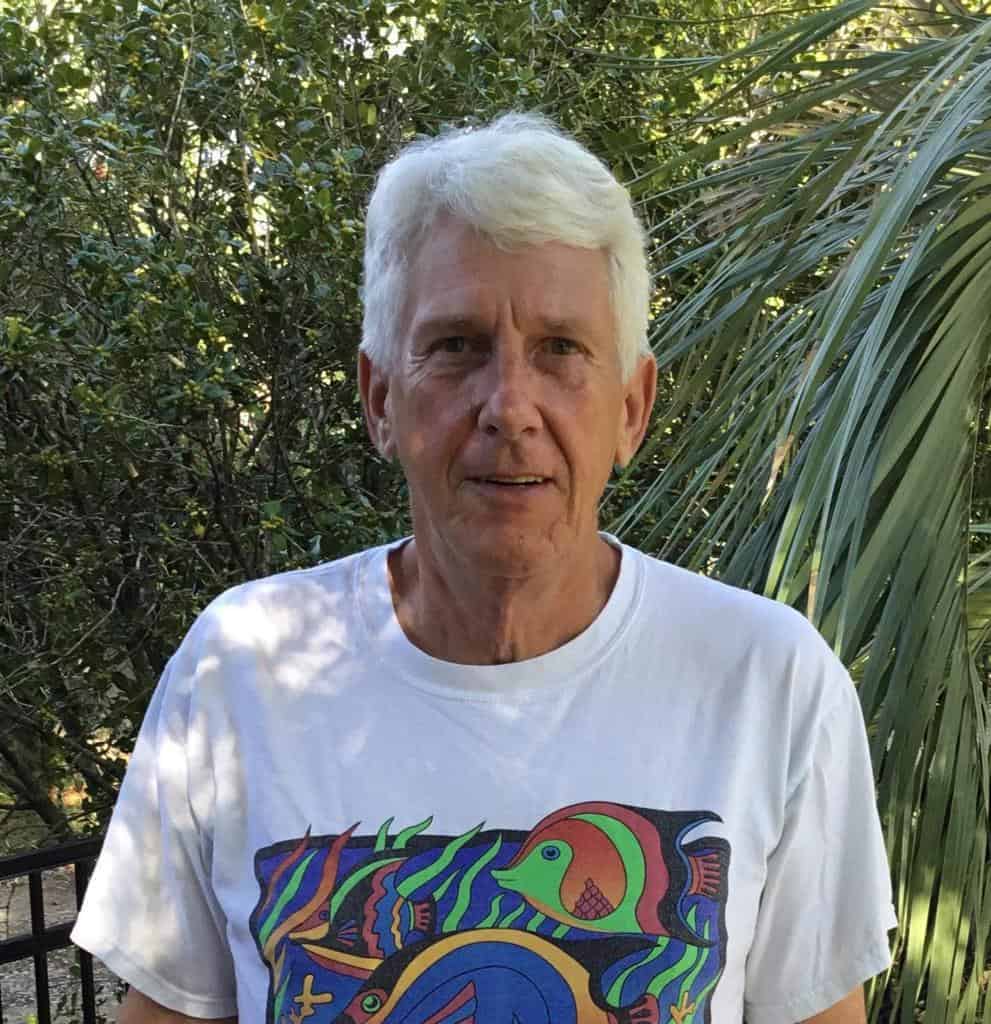As an artist it’s easy to waste a lot of time trying to create “The Perfect Painting,” especially if you still consider yourself a beginner.
In today’s episode, Steve Chase walks us through how to overcome this common dilemma and a couple methods he uses to replicate his pieces.
Steve has lived in central South Carolina for 70 years, is semi-retired, and often considers art to be more of a lifestyle rather than just a hobby.
This episode is sponsored by Acrylicpouring.com – the leading fluid arts website which provides fluid artists around the world the inspiration and tips they need.
If you are new to fluid arts and want to get started now then go to https://acrylicpouring.com/ to learn the 5 fundamentals of making beautiful acrylic pours for FREE. Also, join their Facebook community where every day artists just like YOU are sharing their newest creations that just might end up on another one of these episodes.
Introduction:
Welcome to another episode, the fluid arts podcast with your host Kévin White. Here, we dive into the wonderful world of fluid arts, including acrylic pouring, alcohol, ink, resin, art, and more. Each episode contains a one-on-one session with talented artists who share their techniques, inspirations and tips for creating amazing fluid art. Whether you want to earn a living making art or improve your work, this podcast is for you. So, please sit back and relax as we take you on a journey to learn more about this exciting and engaging art form.
Once again, we have a special guest from the Acrylic Pouring community who goes by the name of Steve Chase. In today’s episode, Steve explains how daily experimentation is the key to overcoming the very familiar feeling of pressure when faced with a blank canvas.

A little bit about today’s guest:
“I’ve lived in central South Carolina for seventy years and I started fluid art painting in November 2017 just to fill some bare walls in our new home.
I did not plan on doing much more than that but I quickly became so mesmerized and infatuated with the process that I continued on.“
So, any reason why you prefer to use an Air Compressor?
Steve: [07:48] Well, when I first started I did like everybody else. I looked on the internet and YouTube and I got all kinds of advice and ideas.
And out of all the things I had seen, using a hairdryer was the most unusual and it dawned on me to give it a shot, so I did. And with a hairdryer, I got nothing.
I couldn’t seem to figure it out. The consistency was always bad, along with many other things, and I happened to have an air compressor in my garage where I was painting.
I said, “this hair dryer doesn’t look powerful enough, I’m going to try this air compressor instead.” And so I did, and I got a lot more success with that than I did with the hairdryer.
Working with an air compressor has both it’s advantages and its disadvantages because it’s not easy to do, and the whole key is being able to control it. It’s been three years now that I’ve used this method, hundreds of pieces later, and I still love it!
What made you transform “Dragon’s Breath” into the centerpiece it is now?
Steve: [04:33] My wife and I moved in our present home about four or five years ago and we loved everything about it…except that there was a hideous beast of a fireplace in the family room.


How did you pull this off?
Steve: [05:29] “I hired a photographer that specialized in Giclée and that’s really the key….He took the high quality photograph of this 14″ by 14″ and blew it up to 4ft by 5ft.“

So, for beginners listening, how do you create a “Perfect Painting?”
Steve: [10:07] “I practice more than I try to produce paintings.
So if I want to make a painting on Saturday, I’ll start off Monday, working with colors to see which colors I want to use. I usually limit it to three and try different combinations and scrape it off and start over again.
I’ll probably do that 20 to 25 times a day, just scraping it off and trying another color, a different combination, placement on the canvas, that sort of thing.
And I’ll tell you the honest truth, I have more fun doing that than I do producing the paintings because so many things are going on.
I try to do one painting a week, and that’s plenty. Other times, I’m having fun just blasting away, trying different things.“
This post is a fraction of the fluid arts podcast, don’t forget to view it and share it with your artist friends. Also, if you haven’t already, don’t forget to join our Facebook community. Thanks, and see you in the next episode.
Steve’s Media Platforms:
Facebook page: https://www.facebook.com/ChaseFluidArt
Website: http://steve-chase.pixels.com/

I’ve lived in central South Carolina for seventy years and I started fluid art painting in November 2017 just to fill some bare walls in our new home.
I did not plan on doing much more than that but I quickly became so mesmerized and infatuated with the process that I continued on.
I hope you enjoy looking at the pictures and feel free to make a comment or ask questions…Thank you!

Terrific podcast with Steve Chase. Hearing him talk about his passion for this art was very informative. Thanks so much!
Delores H
Very kind of you Delores???? Thank you so much
Steve Chase is one of my favorite artists. He consistently produces truly such beautiful pieces. It was really nice to listen to this podcast and learn more about his process. I deleted my FB account a few months ago, so was pleased to Steve being recognized for his talent. It would be great to see a video of him doing a pour and how he uses his compressor. Thank you for sharing, Steve! ????
I really appreciate that Ernie ???? so nice of you
I got some valuable points through this blog.
Several many thanks for share your blog website right here.